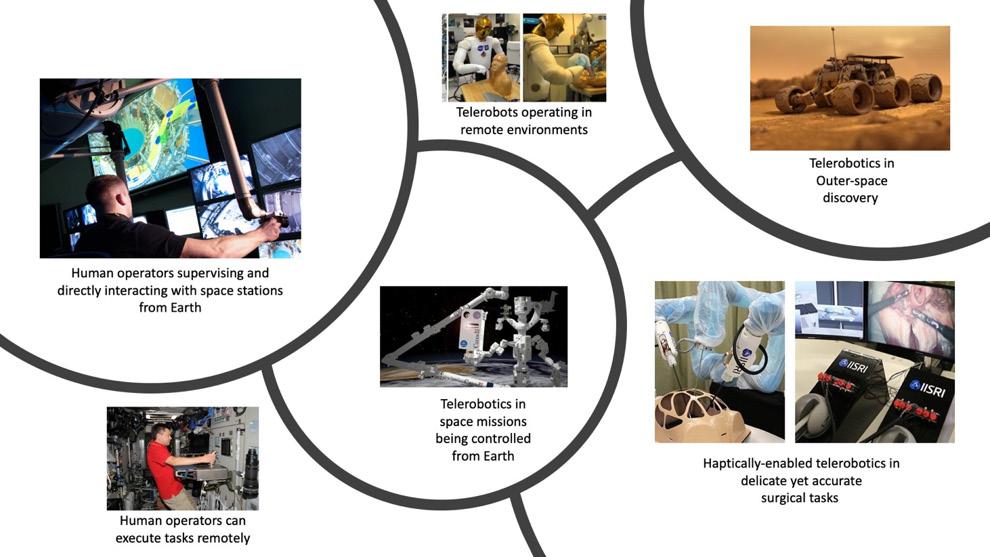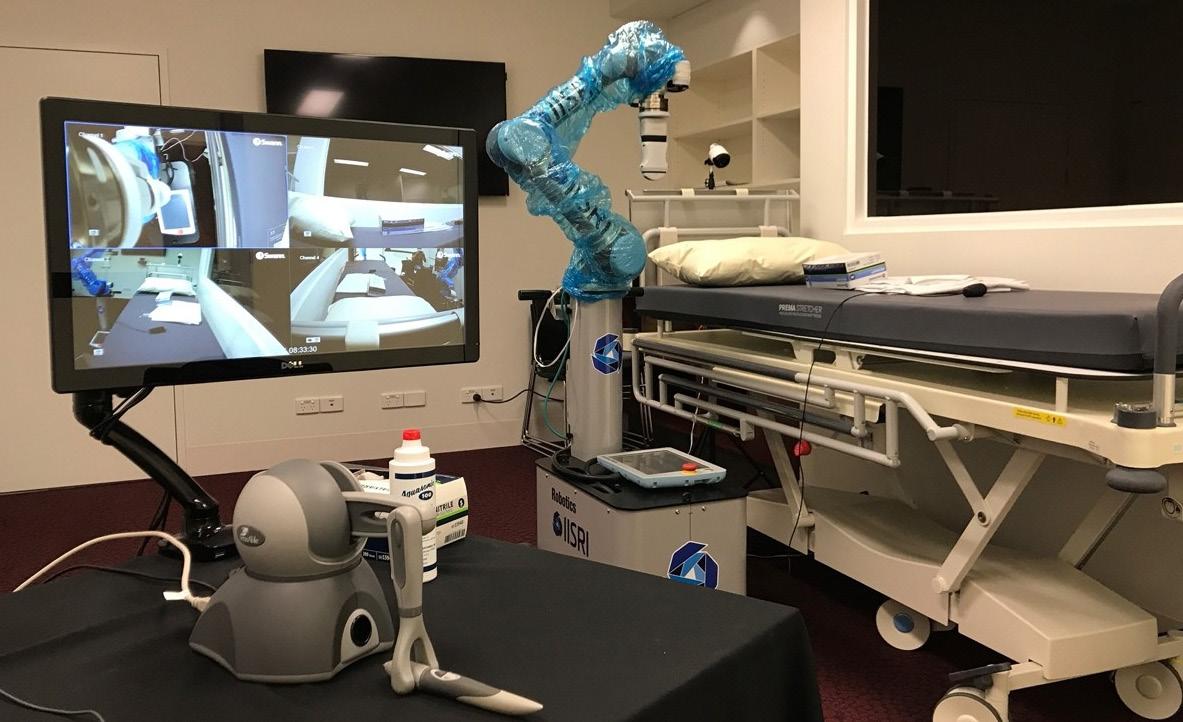
3 minute read
Unlocking the art of teleoperation
2020
UNLOCKING THE ART OF TELEOPERATION
Many applications require remote control of a process, such as teleoperation systems. Teleoperation refers to manipulation and handling of objects remotely, which involves communication between master and slave sides of the system.
These systems are extensively used in telesurgery, outer-space and deepsea exploration, hazardous materials handling, manipulation in dangerous environments, etc. Future space missions in Earth orbit, to the moon, and to other distant destinations offer many new opportunities for exploration. However, astronaut time is always limited, and some work is not feasible or efficient for humans to perform. Robots, however, can complement human explorers, performing work under remote control from Earth, orbit, or nearby habitats. A central challenge, therefore, is to understand how humans and robots can work efficiently and effectively together in order to maximize performance, improve scientific return, and increase mission success. Space telerobots can perform a variety of intravehicular activities and extravehicular activities for missions in orbit, in deep space, or on surface environments. Having machines to accomplish repetitive and tedious tasks more accurately and robustly than humans, saves a valuable amount of time, costs, and workforce. Moreover, it also prevents human operators from workrelated injuries in some cases. Telerobots can take various forms and do a variety of work to increase the productivity of space exploration. They are well suited to performing tasks (surveys, routine maintenance, etc.) that are tedious, highly repetitive, dangerous or long duration, such as advance scouting, site preparation, and habitat construction that help prepare for future human activity. Telerobots can also assist humans side by side during activities and perform followup work, completing tasks started by humans or executing tasks that complement and supplement prior human work.
Human operators supervising and directly interacting with space stations from Earth Telerobotics operating in remote environments
Telerobotics in Outer-space discovery
Human operators can execute tasks remotely Telerobotics in space missions being controlled from Earth
Haptically-enabled telerobotics in delicate yet accurate surgical tasks
Figure 1 – Critical applications of teleoperation technology in various domains from surgery and telehealth, space exploration and surveying, to operations in inaccessible and hazardous environments
Control of a teleoperation system aims to provide satisfactory performance of the remote task and in some cases to provide the operator with sensory feedback. These are essential features in the design of a controller for teleoperation systems. Therefore, proper system and controller design are a requisite, especially for complex and critical applications. Scientific challenges that often exist in the controller design stage are modelling complex master/ slave systems, characterizing system uncertainties and disturbances, dealing with communication delay and loss, and satisfying the performance requirement of the system for a particular task. The performance requirement often includes accuracy of the slave system to follow the commands from the master system while it is interacting with the remote environment and to provide the operator with a transparent sensory feedback from the remote environment. Much ongoing research has been conducted within the literature regarding these challenges. Researchers at IISRI has developed the world first Haptically-Enabled Robotically Controlled Ultrasound Experimental System (HERCULES) to assist sonographers in such a task. The system is tested and evaluated by sonographers and specialists in an actual clinical trial. This technology was initially developed to assist the healthcare community in the combat against COVID-19. The control logic in this system enjoys the state-of-the-art algorithms in dealing with communication uncertainties and perturbations. Achieved his PhD in Information Technology, Dr Parham Kebria has also been awarded Alfred Deakin Postdoctoral Research Fellowship 2020 with the Institute for Intelligent Systems Research and Innovation (IISRI), at Deakin University. Parham’s PhD was focused on teleoperation systems and challenges due to timedelays and uncertainties in such systems, mainly in medical domains and applications. He is now pursuing his research in design and development of intelligent algorithms, including, but not limited to imitation learning and deep learning methodologies and their applications in machine skill acquisition. The aim is to provide surgeons and clinicians with such an intelligent yet reliable technology that can significantly improve the quality and assurance of medical services for human beings all around the world. His research outcomes are all published in top-tier and high-quality journals and conferences through recent years. Additionally, Parham is also contributing to several other projects mainly in algorithm design, AI/ML/DL applications in data science, medical diagnoses, and autonomous systems.

Figure 2 HERCULES being evaluated in real-world clinical trials










